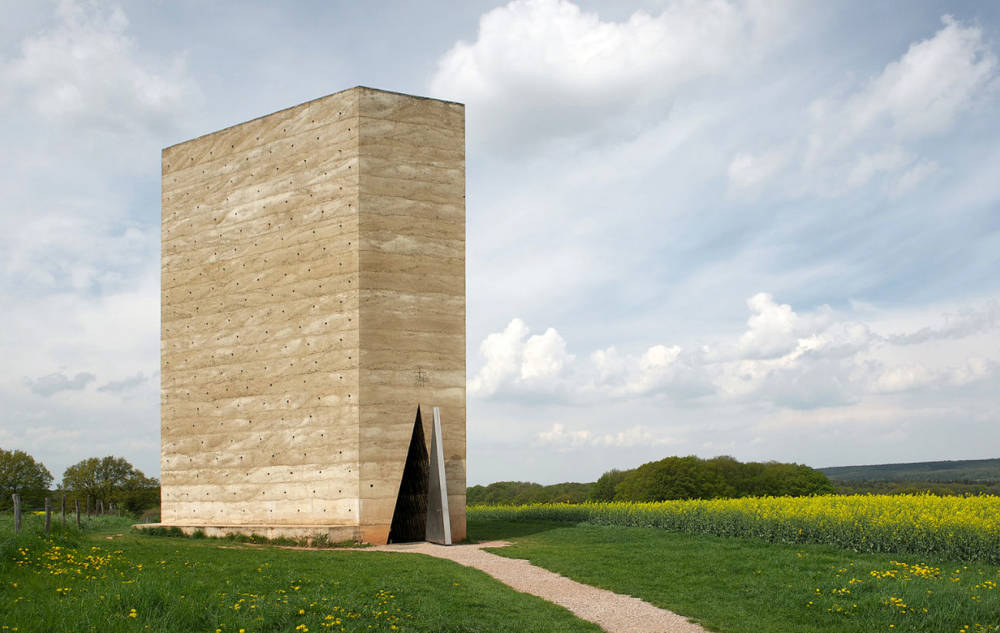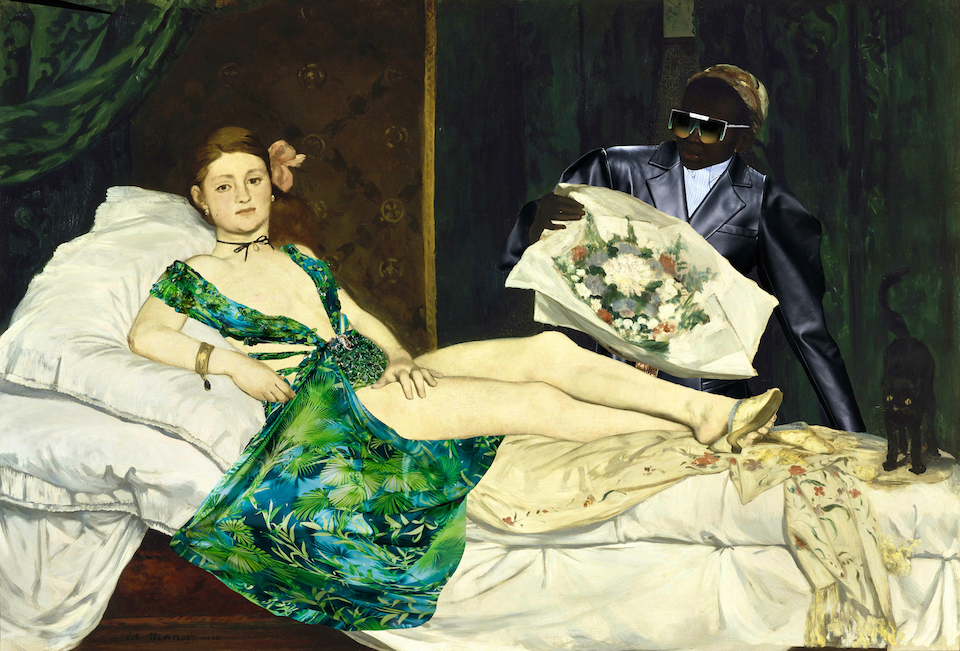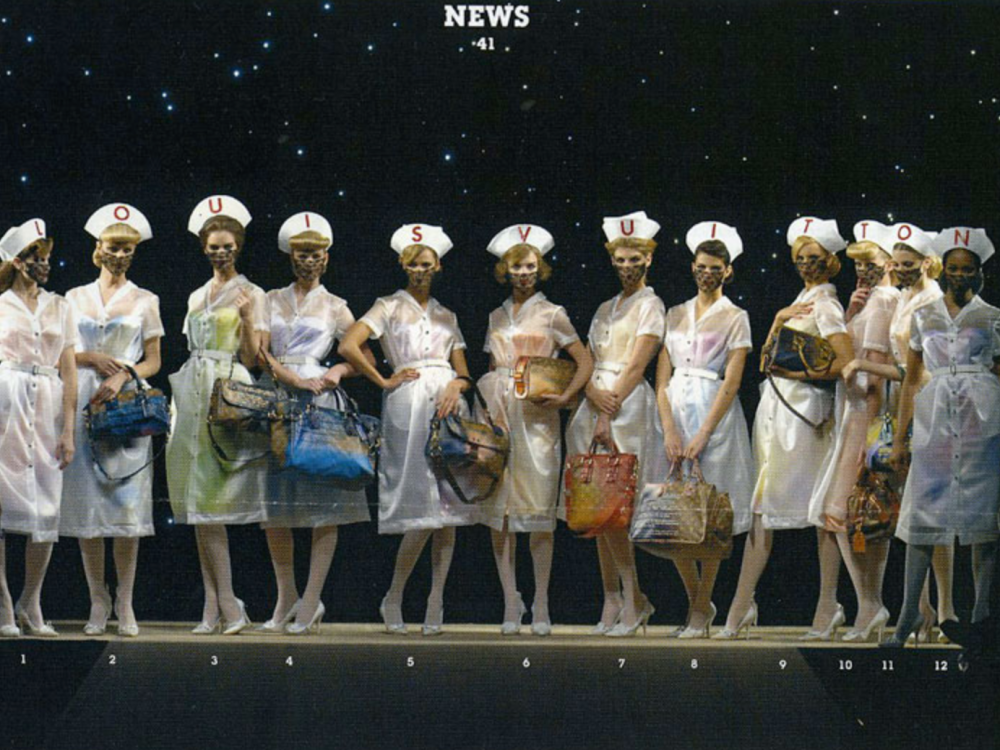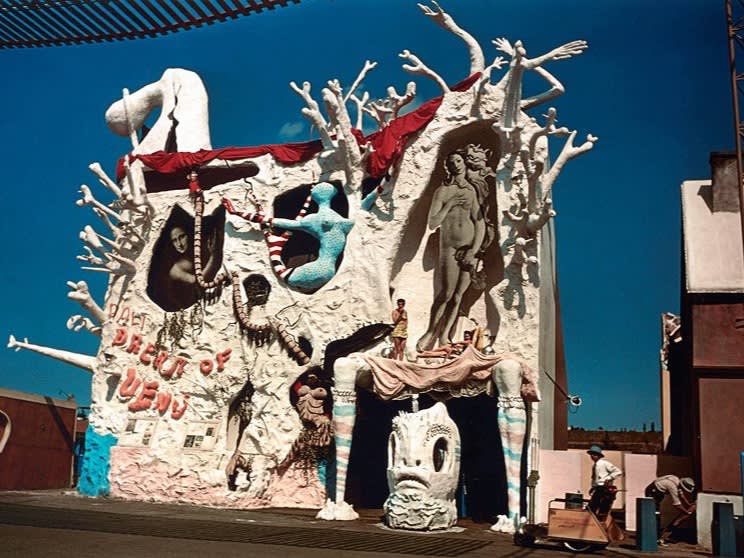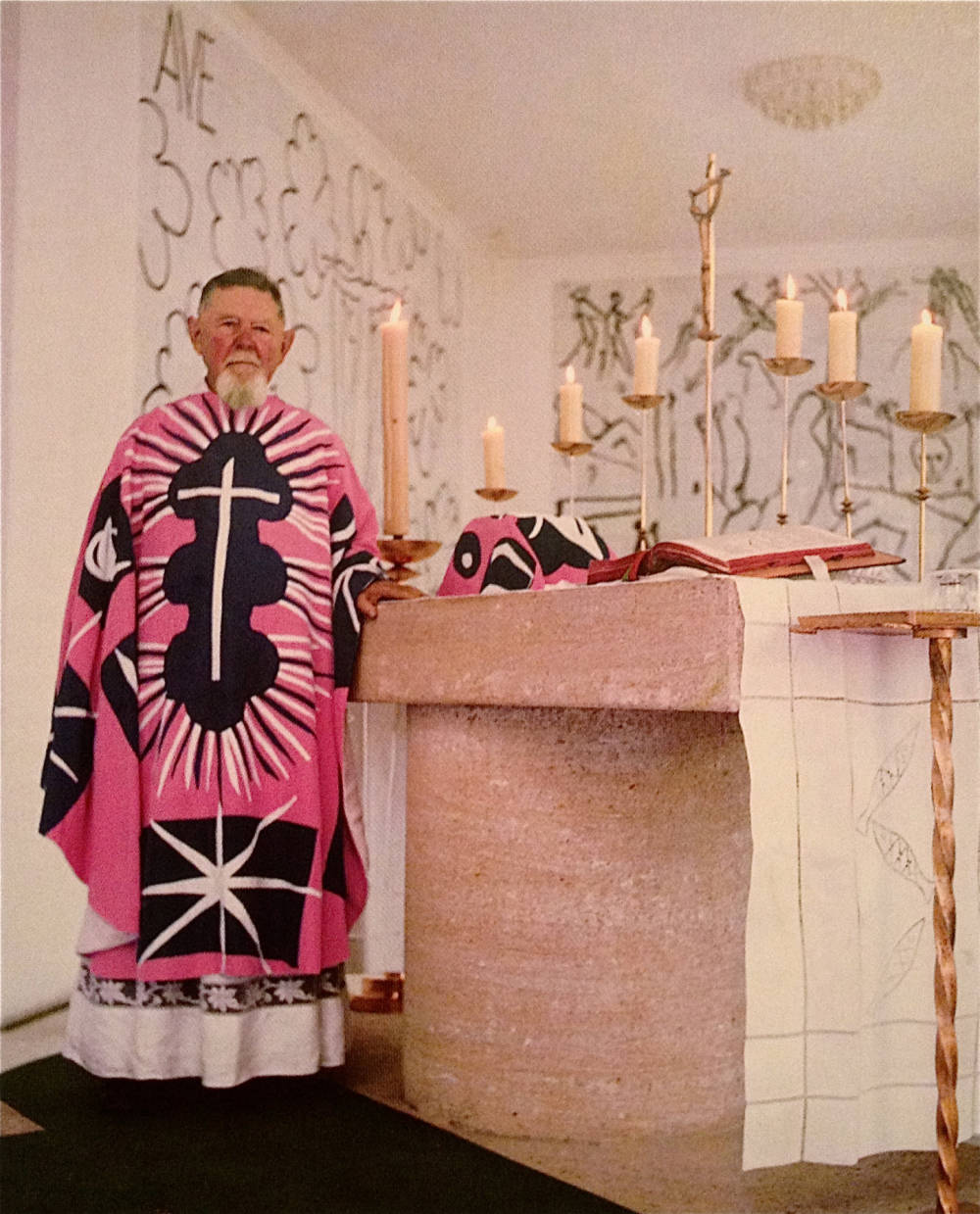
Henri Matisse
Chapel and Priest Vestments, 1949-1951
The emotions triggered when admiring a work of art are akin to a religious experience. For centuries, churches have served as places of worship and structures of esteemed aesthetic beauty through their intrinsic connections to art and architecture; particularly those throughout Western Europe.
From the Contarelli Chapel in Rome – its walls covered in 16th century baroque paintings by Caravaggio – to the renaissance frescos and remarkable Michelangelo-painted ceiling of the Sistine Chapel, artists have a longstanding history of utilizing church interiors as their makeshift canvas. Regardless of religion or beliefs, churches are structures of significant architectural and artistic importance, each with their own nuances and beauty.
Claude Monet
Rouen Cathedral West Facade Sunlight, 1894
Claude Monet
Rouen Cathedral West Facade Sunlight, 1894
Vincent van Gogh
The Church at Auvers, 1890
While the intimate relationship shared between artist and church is most evident in the innumerable structures scattered throughout Western Europe dating back to the renaissance, the tradition continued to thrive for centuries to follow. The 1800s was a period of ‘church as subject’, captured through the artistic eyes of impressionist and post-impressionist painters – from Monet’s prolific series of the Rouen Cathedral to Van Gogh’s gloomy portrayal of The Church at Auvers – while the 20th century was an era of installation. From unique structures, interiors, stained glass windows and hand painted chasubles, artists redefined the role of creative collaborations in the context of Church design throughout the 20th century. Mark Rothko, Henri Matisse and Ellsworth Kelly are three primary examples of modern artists who have focused their creative energy towards designing churches.
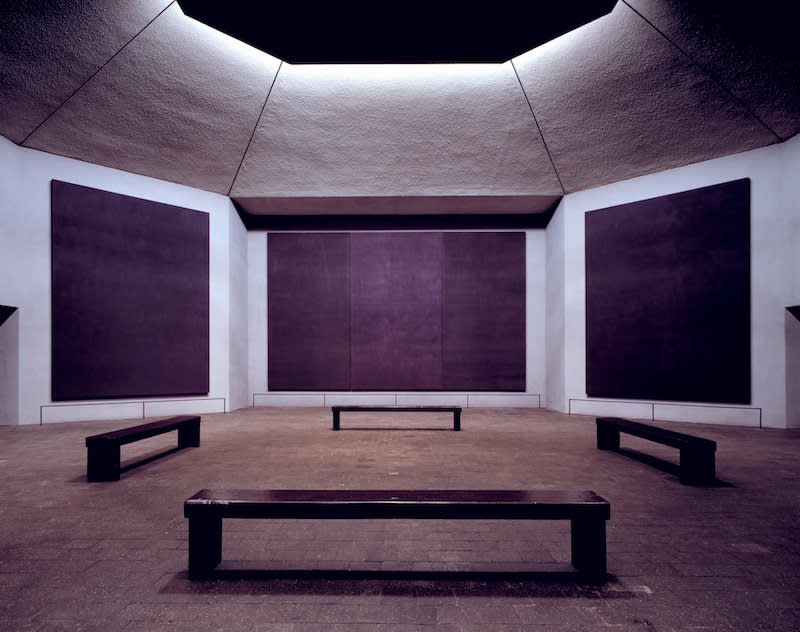
Mark Rothko
Chapel
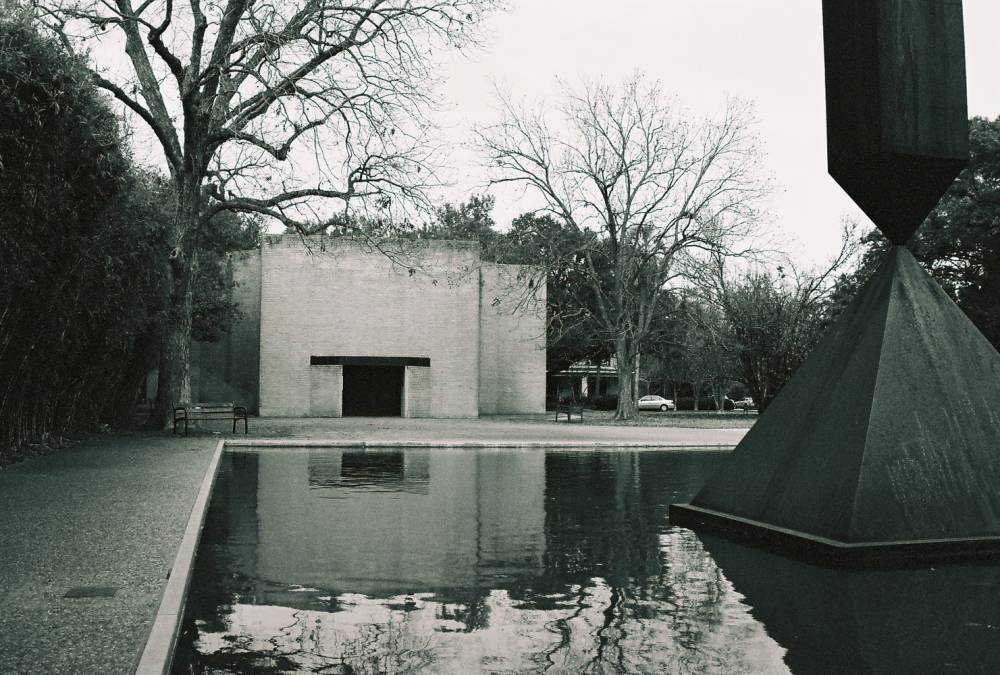
Mark Rothko
Chapel
In 1964, Mark Rothko was commissioned by John and Dominique de Menil to create a non-denominational chapel in Houston, Texas. Rothko was given carte blanche for the structure’s design and interior. The artist hired a number of notable architects – including Philip Johnson – butting heads with each one, to realize his unique vision of creating a meditative environment filled with site-specific works of art. The resulting octagonal structure – its design heavily influenced by the Rothko – houses fourteen large-scale, site-specific black paintings, serving not only as a chapel, but an immersive work of modern art. Ultimately, after a lifelong struggle with depression, Rothko did not live to see the chapel’s completion in 1971.
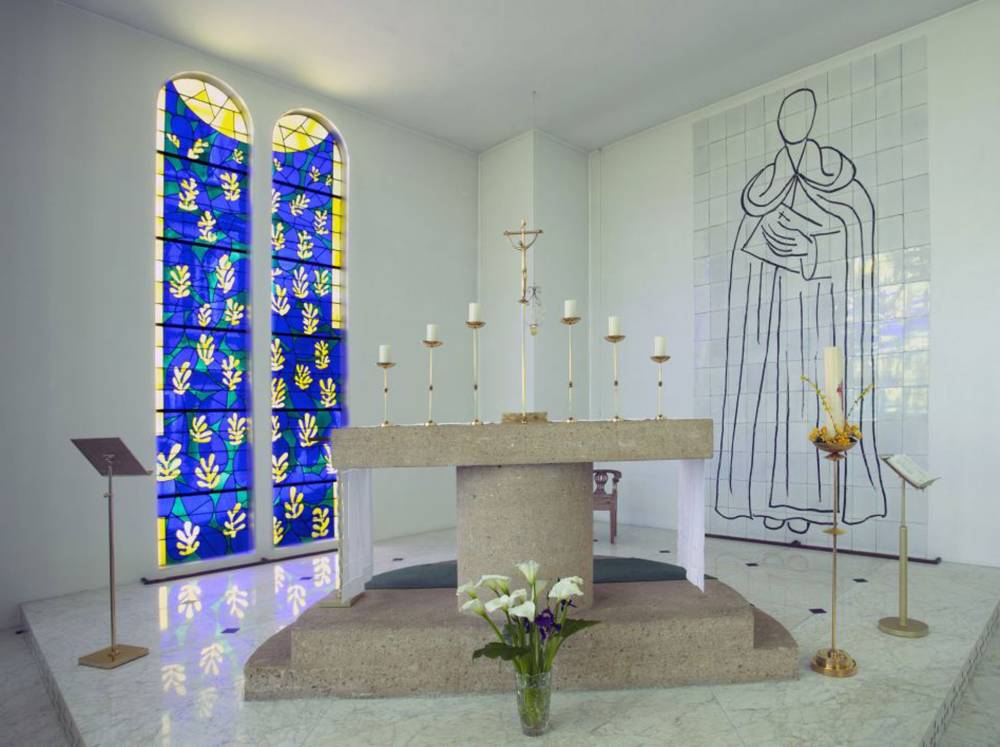
Henri Matisse
Chapel, 1949-1951
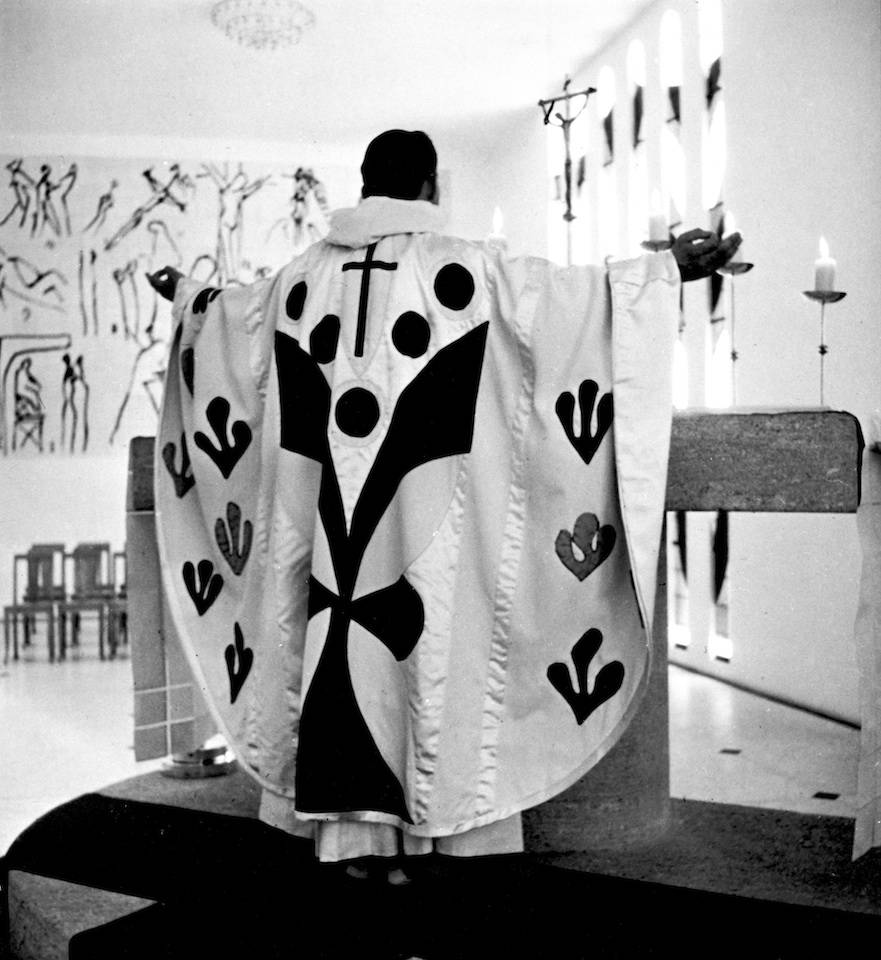
Henri Matisse
Chapel and Priest Vestments, 1949-1951
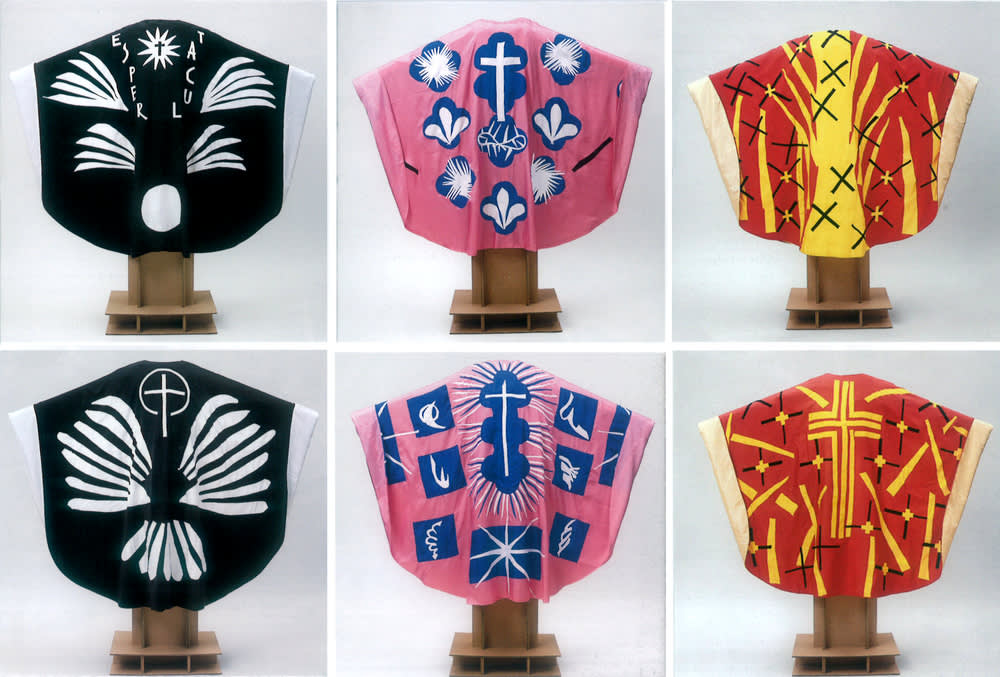
Henri Matisse
Chasubles, 1949-1951
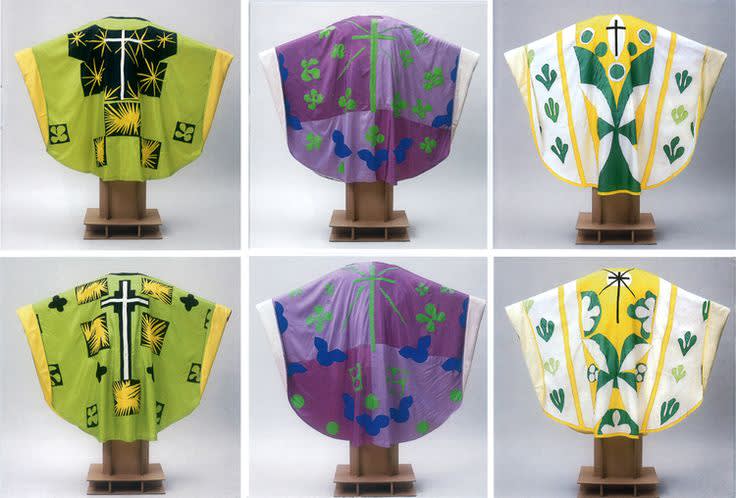
Henri Matisse
Chasubles, 1949-1951
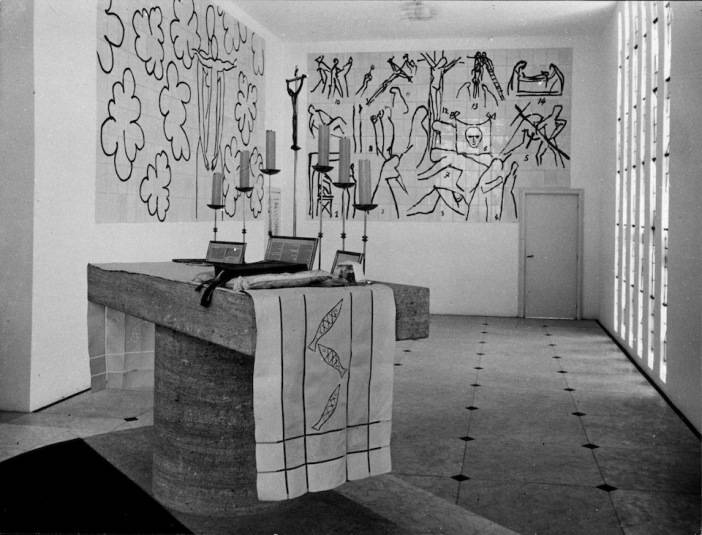
Henri Matisse
Chapel, 1949-1951
The Chapelle du Rosaire de Vence, often referred to as the Matisse Chapel, was designed and built between 1949 and 1951 under a scheme devised by Henri Matisse. The French artist began working on the project at the age of 77, spending more than four years devising plans for the chapel’s architecture, stained glass windows, interior furnishings, murals and the priests’ vestments. Prominent design elements within the chapel paid homage to Matisse’s formal work as an artist, with stained glass windows mimicking shapes present in his cutouts, and fluid line drawings akin to his figurative works. The vibrant, Matisse-designed priest vestments employed traditional ecclesiastical colors of the religious seasons, including purple, black, pink, green and red. Covered with unique patterns and Matisse iconography, the French painter first drafted the ornamental elements with paper cutouts before hand-painting each design.
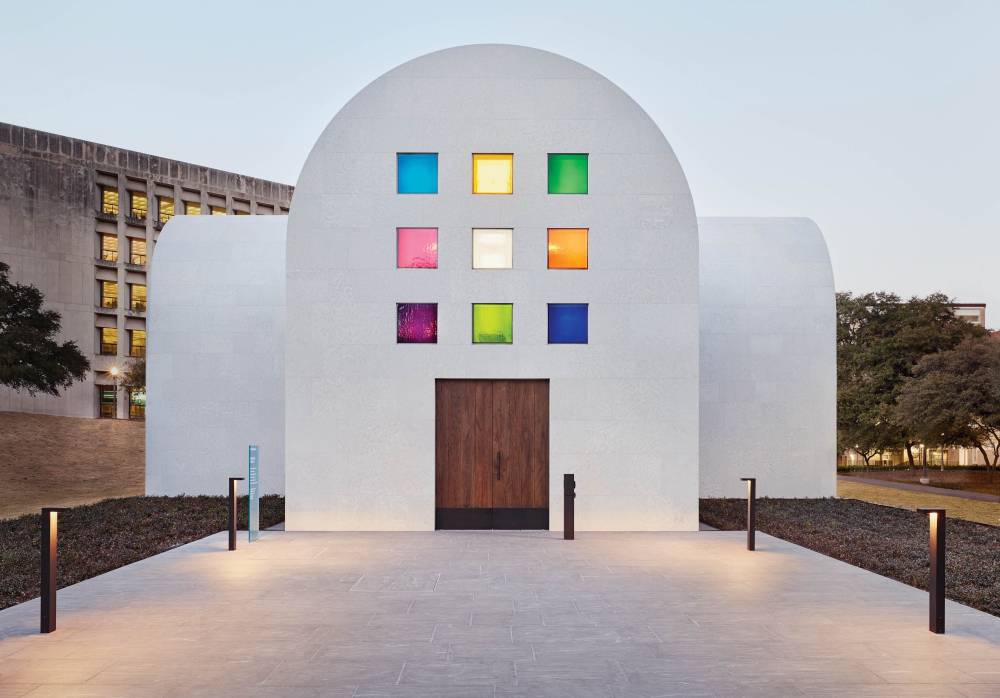
Ellsworth Kelly
Chapel
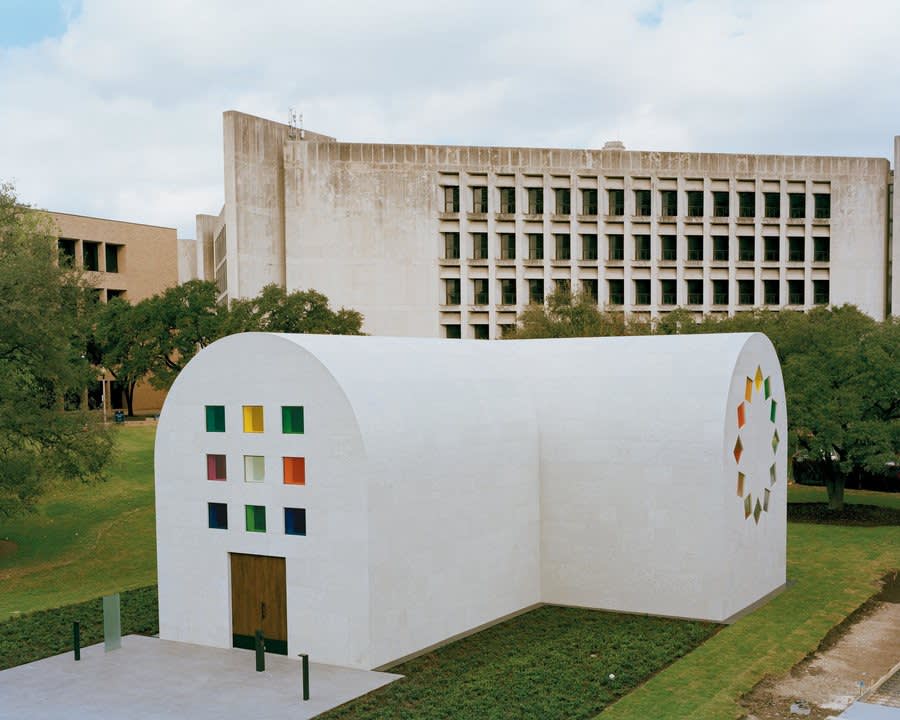
Ellsworth Kelly
Chapel
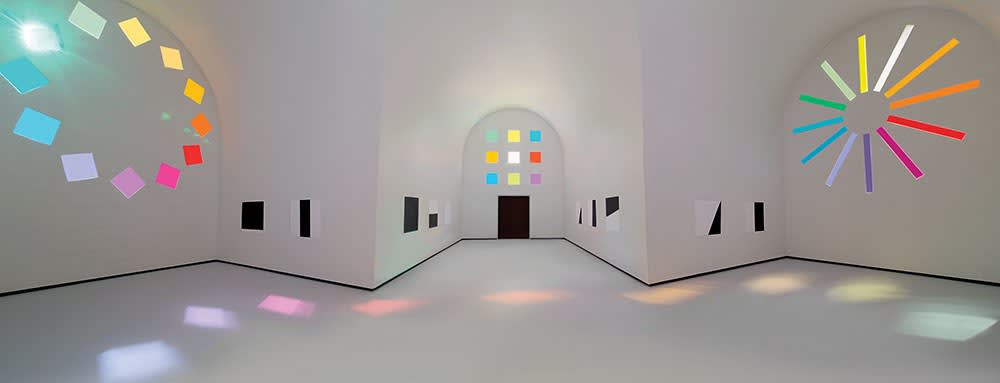
Ellsworth Kelly
Chapel Interior
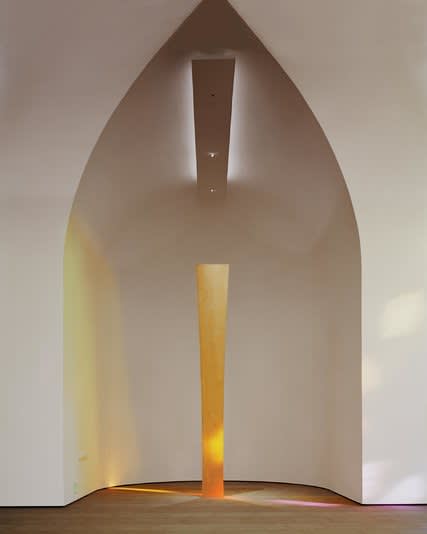
Ellsworth Kelly
Chapel Interior
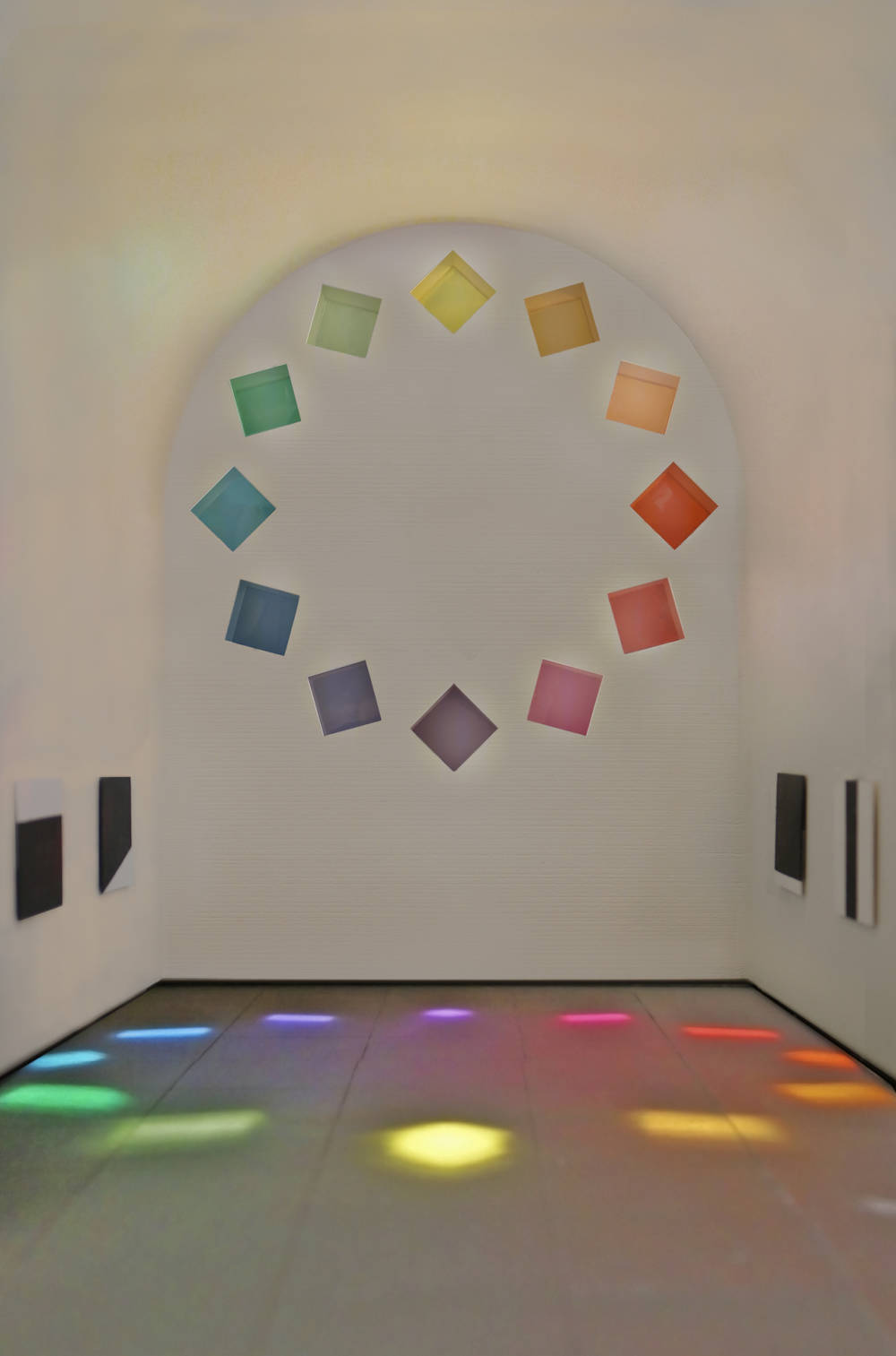
Ellsworth Kelly
Chapel Interior
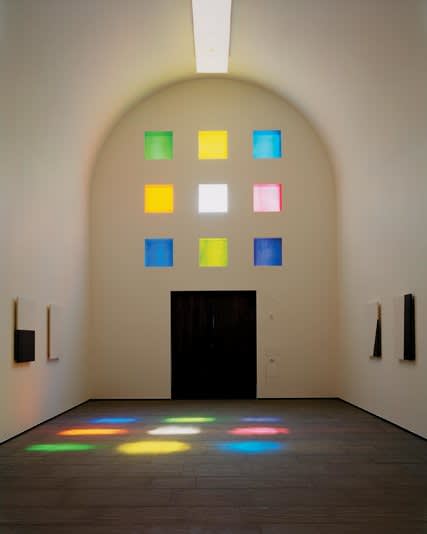
Ellsworth Kelly
Chapel Interior
One of the most comprehensive examples of a painter utilizing a church as an artistic medium is the vibrant sanctuary designed by Color Field artist Ellsworth Kelly. Recognized for his monochromatic, vibrant aesthetic, Kelly’s work is grounded in the idea of stripping painting and sculpture down to elemental components of color and form. In 1986, producer and collector Douglas Cramer approached Kelly to design an original, freestanding structure for his property in Santa Barbara, California. The resulting chapel, which eventually fell through, was put on hold for 30 years until 2015, when the structure was finally built on the campus of the University of Texas. The simple, double-barrel-vaulted design – akin to Romanesque religious architecture – resembles an igloo in the shape of a cross. Three of the building’s four extended channels include unique, colorful stained glass designs in geometric configurations; marking the artist’s first attempt at employing light to fully realize his artistic vision. Inside the stone chapel hang fourteen marble panels with varying black and white designs, and an eighteen-foot totem sculpture in place of a traditional cross. The static, achromatic artworks are in constant dialogue with the chapel’s changing environment generated by colorful rays of light penetrating through the facade’s stained glass windows.
Sigmar Polke Stained
Stained Glass Windows, 2009
Sigmar Polke
Stained Glass Windows, 2009
Sigmar Polke Stained
Stained Glass Windows, 2009
Sigmar Polke
Stained Glass Windows, 2009
Gerhard Richter
Stained Glass Windows, 2007
Gerhard Richter
Stained Glass Windows (reflection), 2007
One of the most distinctive ornamental elements within the design of nearly every church is the presence of stained glass windows. While Ellsworth Kelly put particular emphasis on colorful windows within his tailor-made chapel, a number of contemporary artists have created glass works for existing structures around the world. In 2009, artist Sigmar Polke, who originally trained as a glass painter, created a series of twelve windows, with two distinct design narratives, for the Grossmunster Church in Zurich. Seven of the church’s Romanesque windows exhibit abstract mosaics of thinly sliced, colorful agate, while the remaining five designs are figurative depictions of images from the Old Testament, based on medieval illuminations.
In August 2007, German painter Gerhard Richter created a modern stained glass window for the south transept of a catholic cathedral in Cologne, Germany; construction on this cathedral began in 1248 and was completed 632 years later in 1880. Richter’s abstract work – surrounded by figurative, catholic depictions – is composed of 11,500 identically sized pieces of colored glass, resembling pixels. The design, akin to Richter’s early color charts, was generated and arranged randomly by a computer. The reflection of the work imbues colorful light throughout the interior of the structure, creating an immense pixilated ‘carpet’ across the church’s 19th century flooring.
Dan Flavin
Chiesa Rossa, 1996
Dan Flavin
Chiesa Rossa, 1996
Louise Bourgeois
Church, 1998
Louise Bourgeois
Church, 1998
Louise Bourgeois
Church, 1998
Louise Bourgeois
Church, 1998
In similar spirit to Polke and Richter’s temporary creative exploration of painting with sunlight, artist Dan Flavin spent his career testing the limits and boundaries of color and light. In 1996, Flavin produced a site-specific work for Milan’s Chiesa Rossa church. The installation, made of green, blue, red and yellow neon lights, permeates the entirety of the space, mirroring the effect of traditional stained glass windows through artificial means. Unlike the evolving colorful reflections produced by natural light penetrating through glass, Flavin’s installation is a highly controlled and intentional experience, mimicking the effects of night, dawn and day without relying on sunlight.
Like Flavin, French artist Louise Bourgeois also employed an existing church as a setting to install her work. Since 1998, the Louise Bourgeois Church in Bonnieux, France, has housed a number of original sculptures by the French artist, each with varying religious undertones. Works include an erotic marble baptismal, a confessional with works in tapestry baring religious inscriptions, a sculpture of hands joined in prayer, a Christ in rags, and a bronze spider symbolizing a mother.
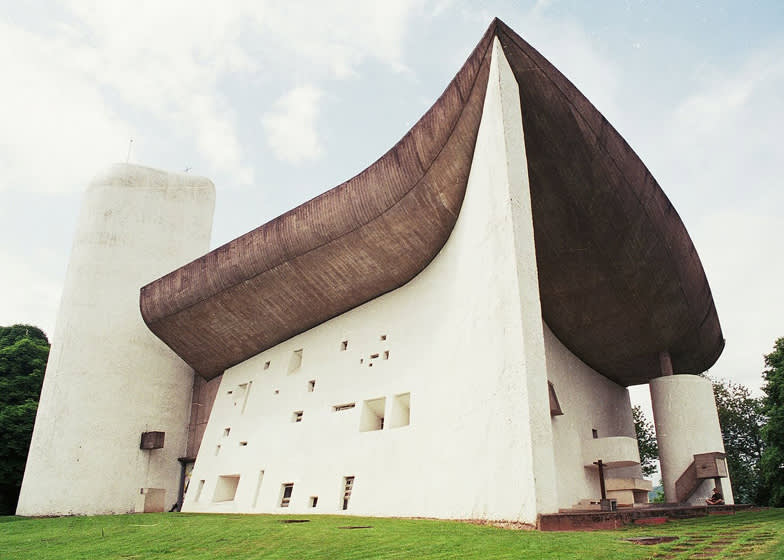
Le Corbusier
Notre Dame du Haut, 1955
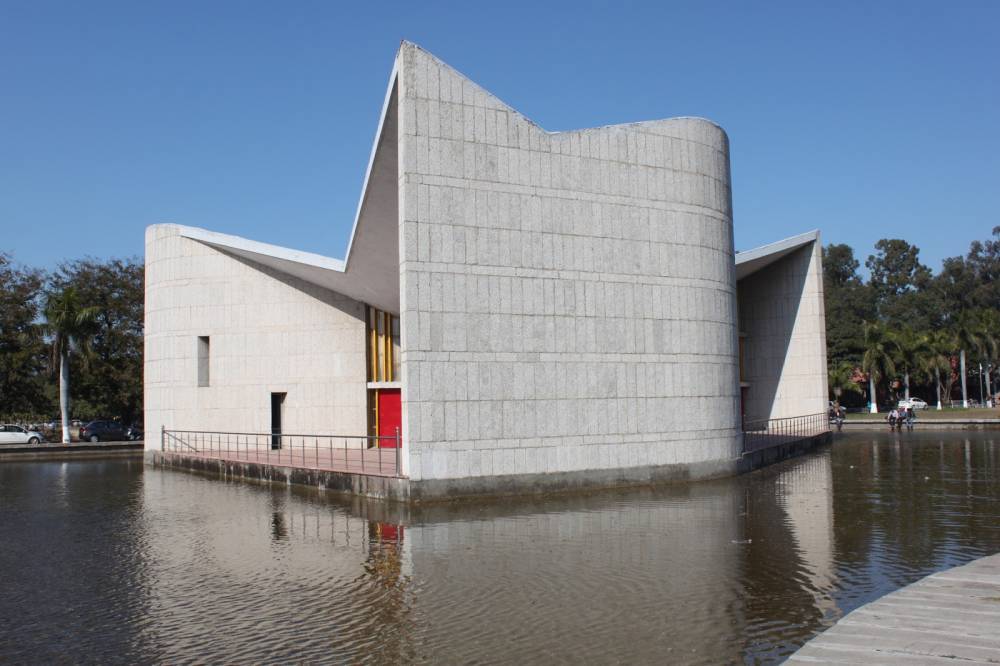
Pierre Jeanneret
Ghandhi Bhawan, 1961
While churches have been captivating the creative minds of artists for centuries, they have proven equally inspiring environments for the work of modern architects. Throughout the mid 20th century, distinctive churches were erected around the globe, designed by the eras leading international architects. In 1950, Le Corbusier was commissioned to design a Roman Catholic chapel in Ronchamp, France. Notre Dame du Haut was completed in 1955, serving as one of the Franco-Swiss architect’s most distinguished building as well as a preeminent example of twentieth-century religious architecture. Throughout the 1950s and 60s, Le Corbusier’s cousin Pierre Jeanneret was living in Chandigarh, India, devoting his practice to a large civic architecture project. In 1961, Jeanneret completed the Ghandhi Bhawan, a building designed to promote the study of Gandhian ideals; a less traditional example of a church-like structure, but a space erected for the sole purpose of forwarding the religious teachings of Gandhism.
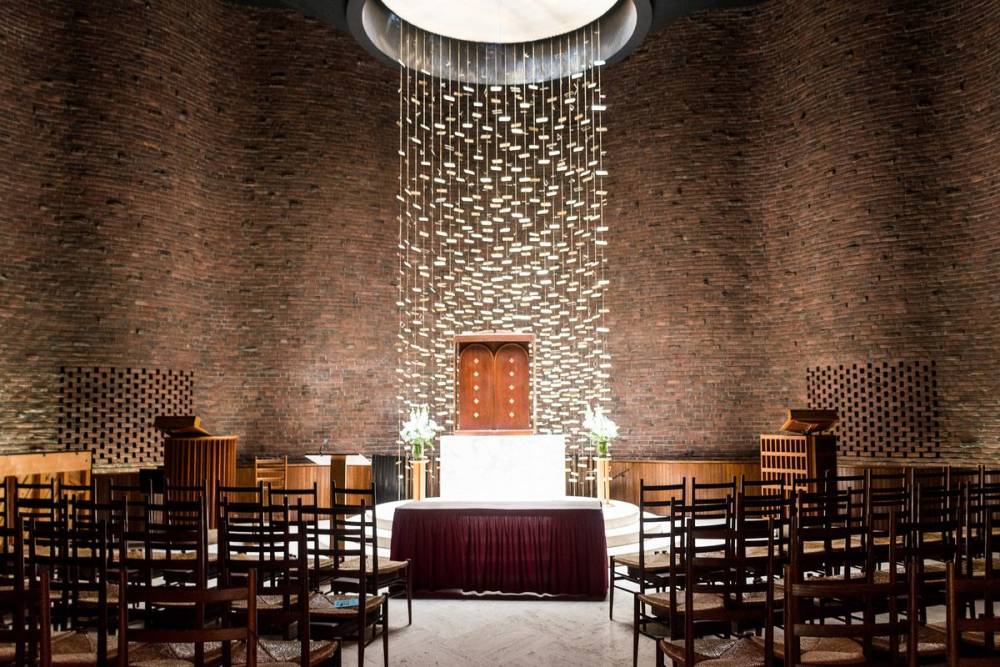
Eero Saarinen
MIT Chapel, 1955
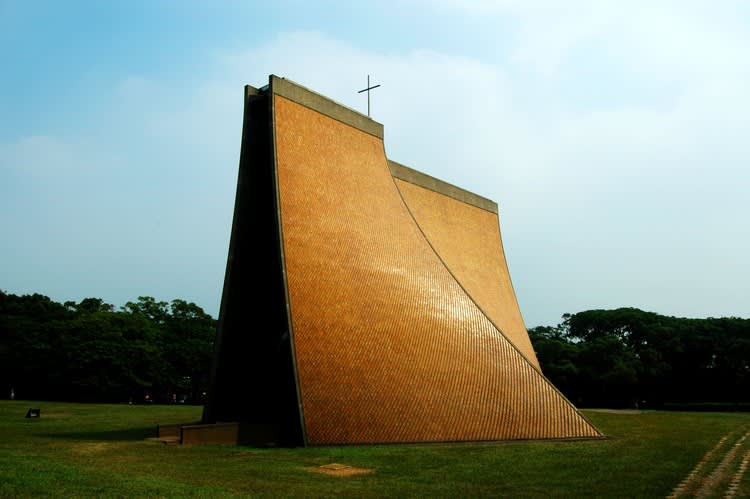
I.M. Pei
Luce Memorial Chapel, 1963
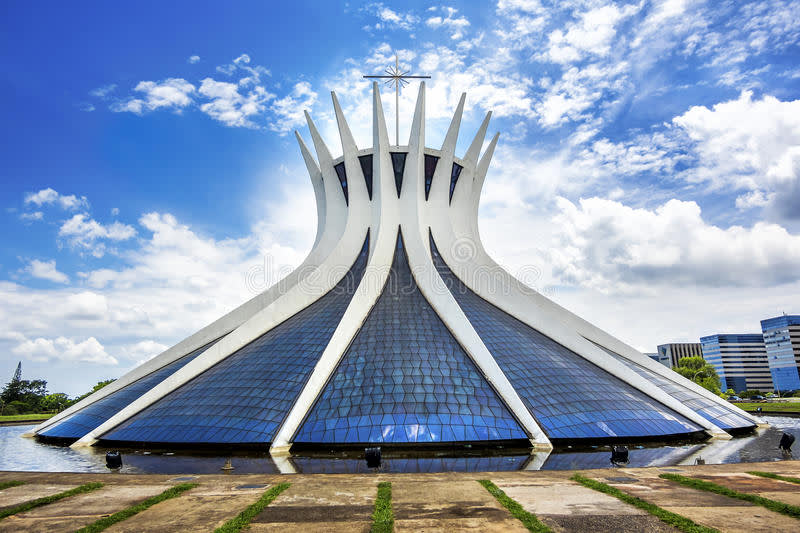
Oscar Niemeyer
Catedral de Brasilia, 1970
In 1955, Finnish architect Eero Saarinen designed a non-denominational chapel on the campus of MIT in Cambridge, Massachusetts; an intimate, cylindrical structure made of brick. Saarinen omitted windows from the building’s design, except for a circular skylight, through which natural light filters down an atrium housing a metal sculpture by Harry Bertoia; a simple oasis of mystic serenity. In 1963, Chinese architect I.M. Pei designed the Luce Memorial Chapel for the campus of Tunghai University in Taiwan as a sanctuary for the school’s students and professors. The complex design made of reinforced concrete is covered in glazed diamond-shaped tiles, it’s interior reflecting a similar geometric pattern, designed to house over 500 occupants. In 1970, Brazilian architect Oscar Niemeyer completed the Cathedral of Brasilia, a hyperboloid structure based on the geometry of sixteen concrete columns, serving both structural and esteemed ornamental means.
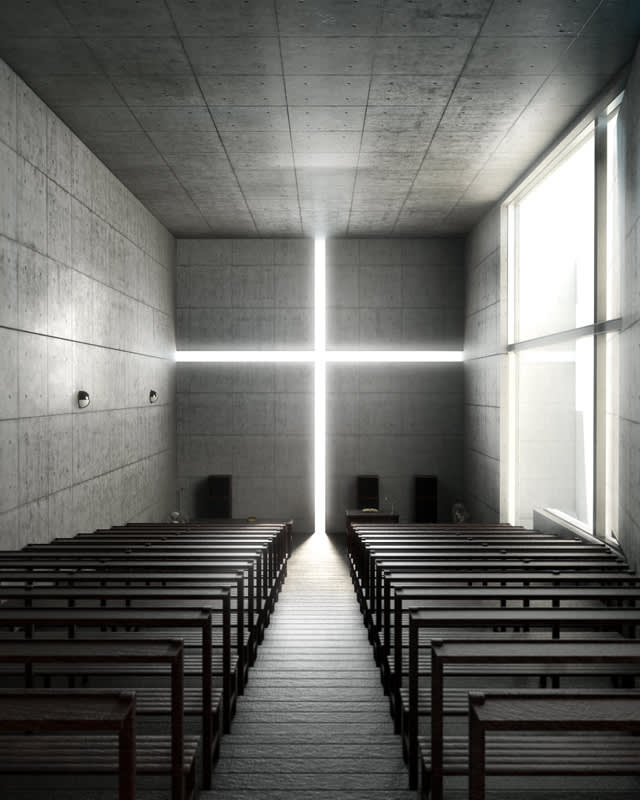
Tadao Ando
Church of the Light, 1989
In the late 1980s, Japanese architect Tadao Ando created the Church of the Light, in Osaka, Japan. The chapel’s modernist, reinforced concrete design – a trademark material of Ando’s – employs a single wall of four disjoined panels to filter light through the structure’s interior in the shape of a cross. Instances of notable architects designing buildings of worship have continued into the 21st century, prominent examples including Richard Meier’s Jubilee Church outside central Rome and Peter Zumthor’s Bruder Klaus Field Chapel in Germany, completed in 2003 and 2007, respectively. The inherent connection between architecture, fine art and religion is palpable, grounded in each system’s intrinsic tie to faith, worship, individualistic teaching philosophies and, above all, beauty.
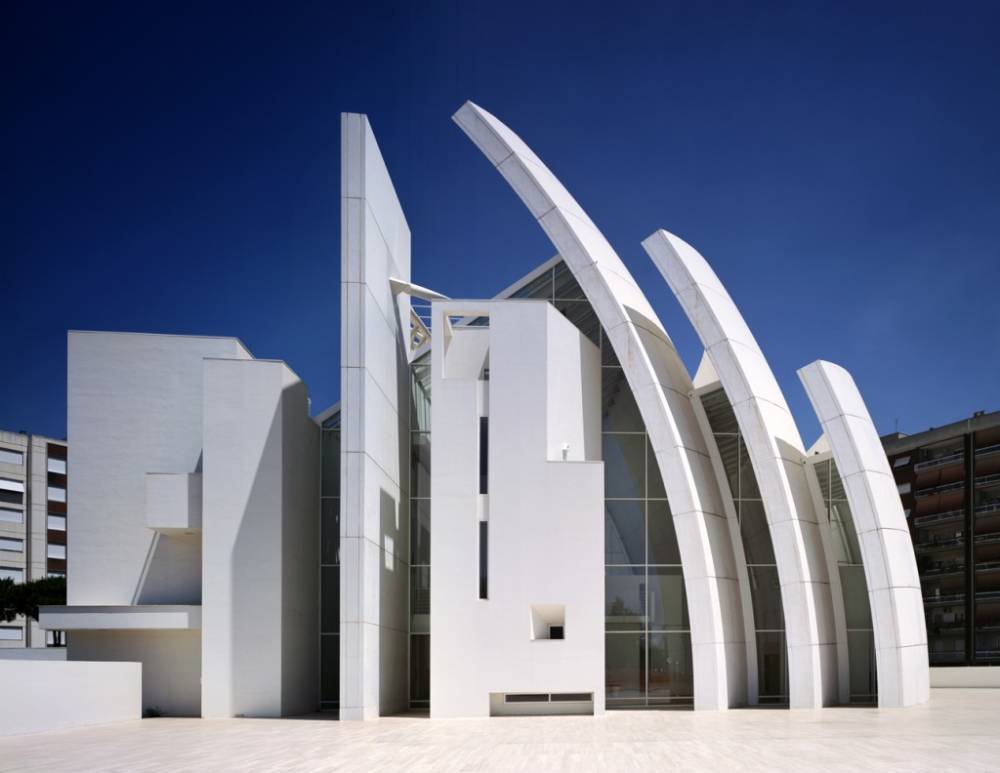
Richard Meier
Jubilee Church, 2003
